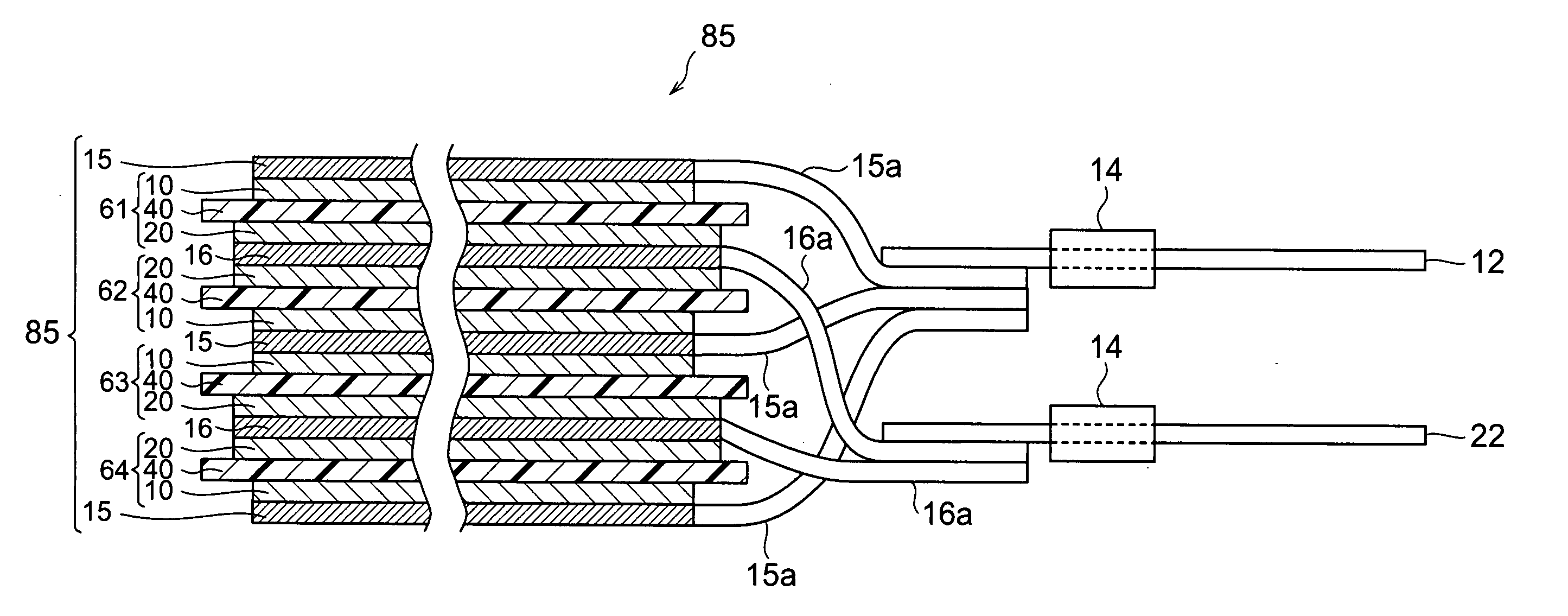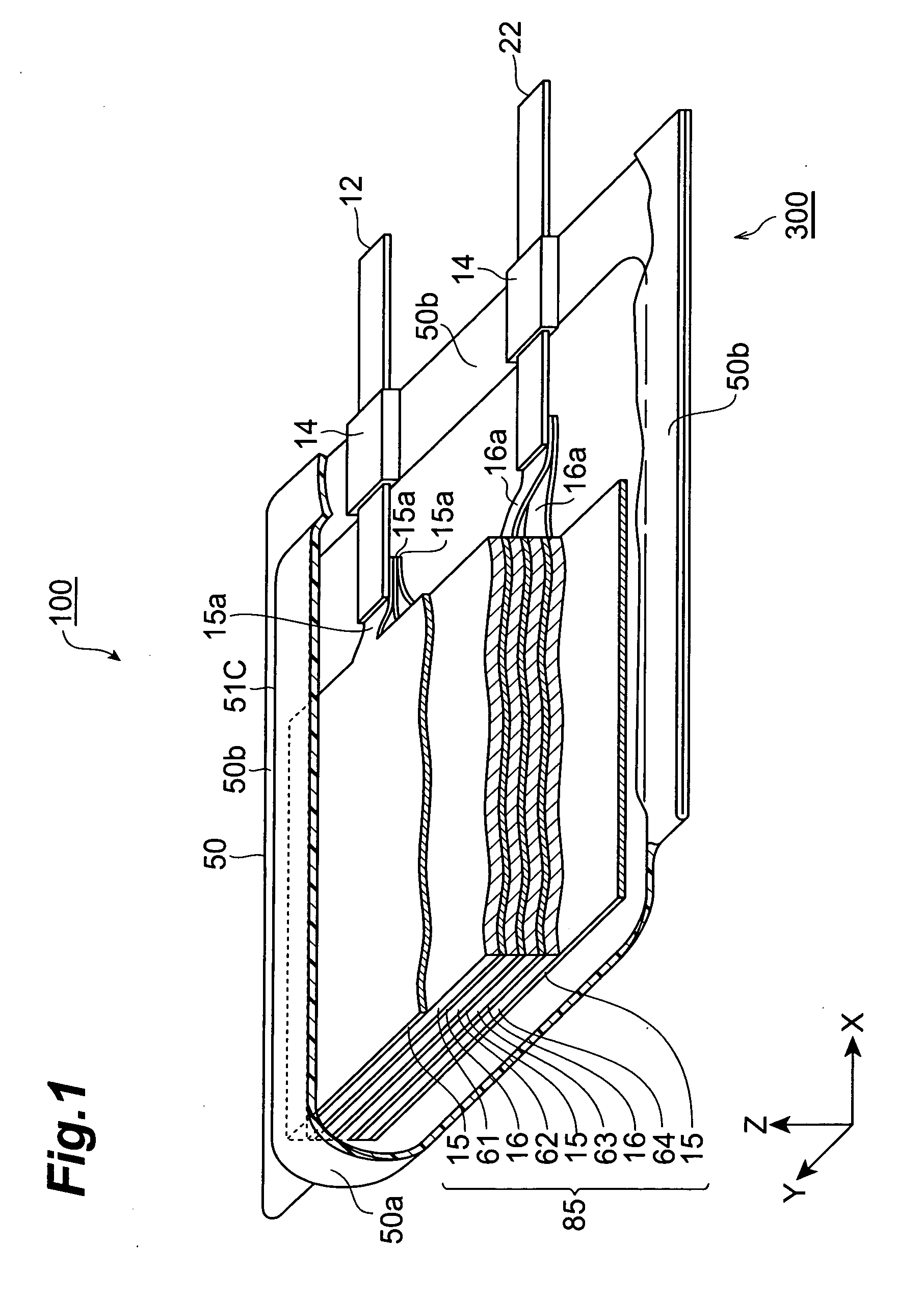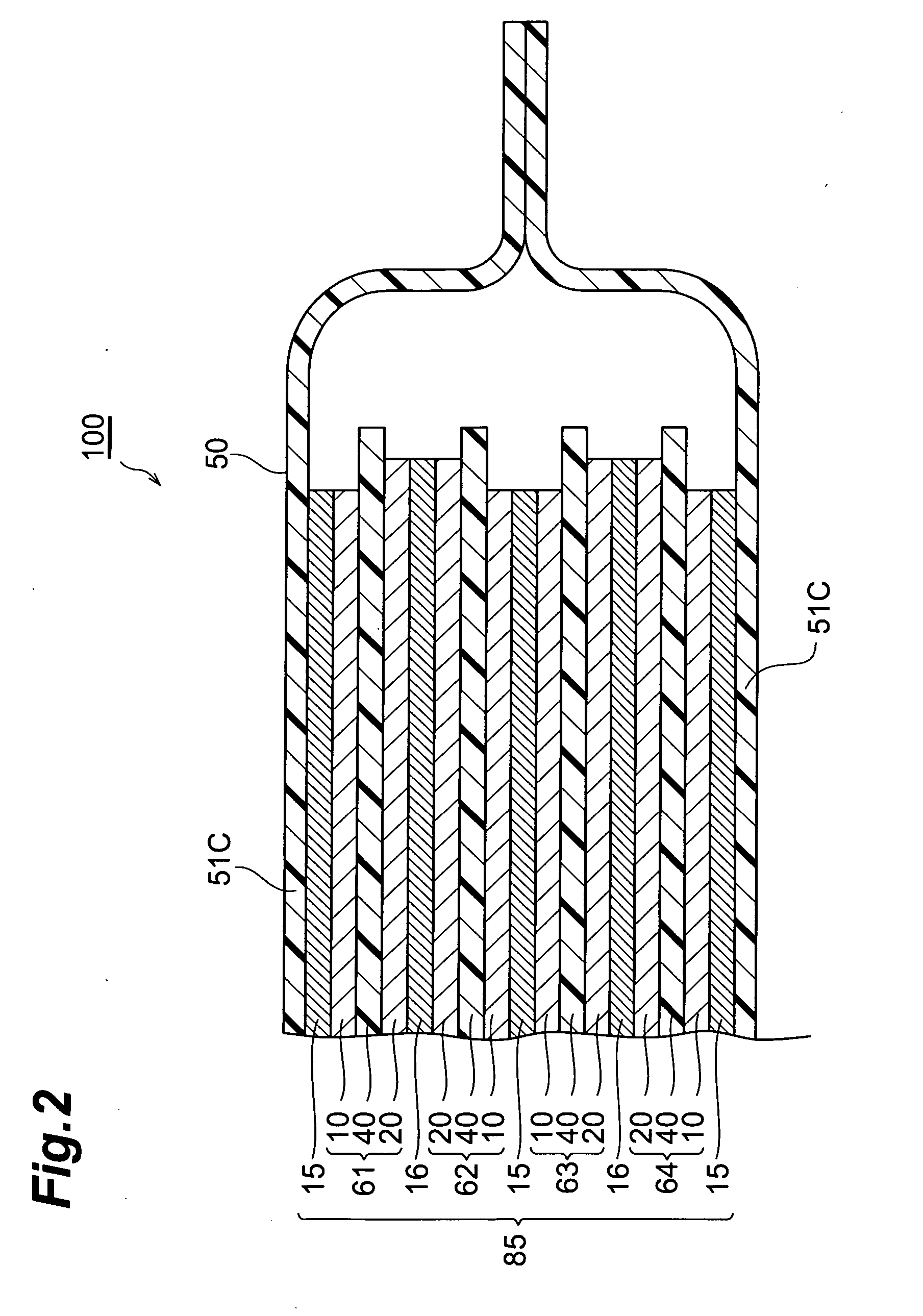Lithium-ion secondary battery and method of charging lithium-ion secondary battery
a lithium-ion secondary battery and lithium-ion battery technology, applied in the direction of secondary cell servicing/maintenance, cell components, sustainable manufacturing/processing, etc., can solve the problem that the capacity keeping ratio after the cycle of charging/discharging is likely to deteriorate remarkably, and achieve the effect of less likely to deteriorate its capacity greatly
- Summary
- Abstract
- Description
- Claims
- Application Information
AI Technical Summary
Benefits of technology
Problems solved by technology
Method used
Image
Examples
first embodiment
[0025] First, an embodiment of the lithium-ion secondary battery in accordance with the present invention will be explained in detail.
[0026]FIG. 1 is a partly broken perspective view showing a lithium-ion secondary battery 100 in accordance with a first embodiment of the present invention. FIG. 2 is a sectional view taken along the YZ plane of FIG. 1. FIG. 3 is a view showing a laminate structure 85 and leads 12 and 22 as seen in the ZX cross section of FIG. 1.
[0027] As shown in FIGS. 1 to 3, the lithium-ion secondary battery 100 in accordance with this embodiment is mainly constituted by a laminate structure 85; a case (package) 50 for accommodating the laminate structure 85 in a closed state; and leads 12 and 22 for connecting the laminate structure 85 to the outside of the case 50. The laminate structure 85 comprises, successively from the upper side, a positive electrode collector 15, a secondary battery element 61, a negative electrode collector 16, a secondary battery elemen...
example 1
[0094] First, cathode laminates were made in the following procedure. Initially, LiMn0.33Ni0.33CO0.34O2 (where the subscripts indicate atomic ratios) as a positive electrode active material, acetylene black as a conductive auxiliary agent, and polyvinylidene fluoride (PVdF) as a binder were prepared. They were mixed and dispersed by a planetary mixer such that the weight ratio of positive electrode active material / conductive auxiliary agent / binder =90:6:4. Then, the viscosity of the resulting product was adjusted with an appropriate amount of NMP as a solvent mixed therein, whereby a slurry-like cathode coating liquid (slurry) was prepared.
[0095] Subsequently, an aluminum foil (having a thickness of 20 μm) was prepared, and the cathode coating liquid was applied thereto by doctor blading such that the carried amount of the active material became 5.5 mg / cm2, and then was dried. Thus obtained product was pressed with calender rolls such that the applied cathode layer attained a poros...
example 2
[0103] The procedure was the same as Example 1 except that Solupor 8P07A manufactured by Teijin Solufill Co., Ltd. (having a thickness of 50 μm, a Gurley air permeation of 6 s / 100 cm3, and a porosity of 85%) was used as separators.
PUM
| Property | Measurement | Unit |
|---|---|---|
| porosity | aaaaa | aaaaa |
| constant voltage | aaaaa | aaaaa |
| crystallite size Lc002 | aaaaa | aaaaa |
Abstract
Description
Claims
Application Information
 Login to View More
Login to View More - R&D
- Intellectual Property
- Life Sciences
- Materials
- Tech Scout
- Unparalleled Data Quality
- Higher Quality Content
- 60% Fewer Hallucinations
Browse by: Latest US Patents, China's latest patents, Technical Efficacy Thesaurus, Application Domain, Technology Topic, Popular Technical Reports.
© 2025 PatSnap. All rights reserved.Legal|Privacy policy|Modern Slavery Act Transparency Statement|Sitemap|About US| Contact US: help@patsnap.com



